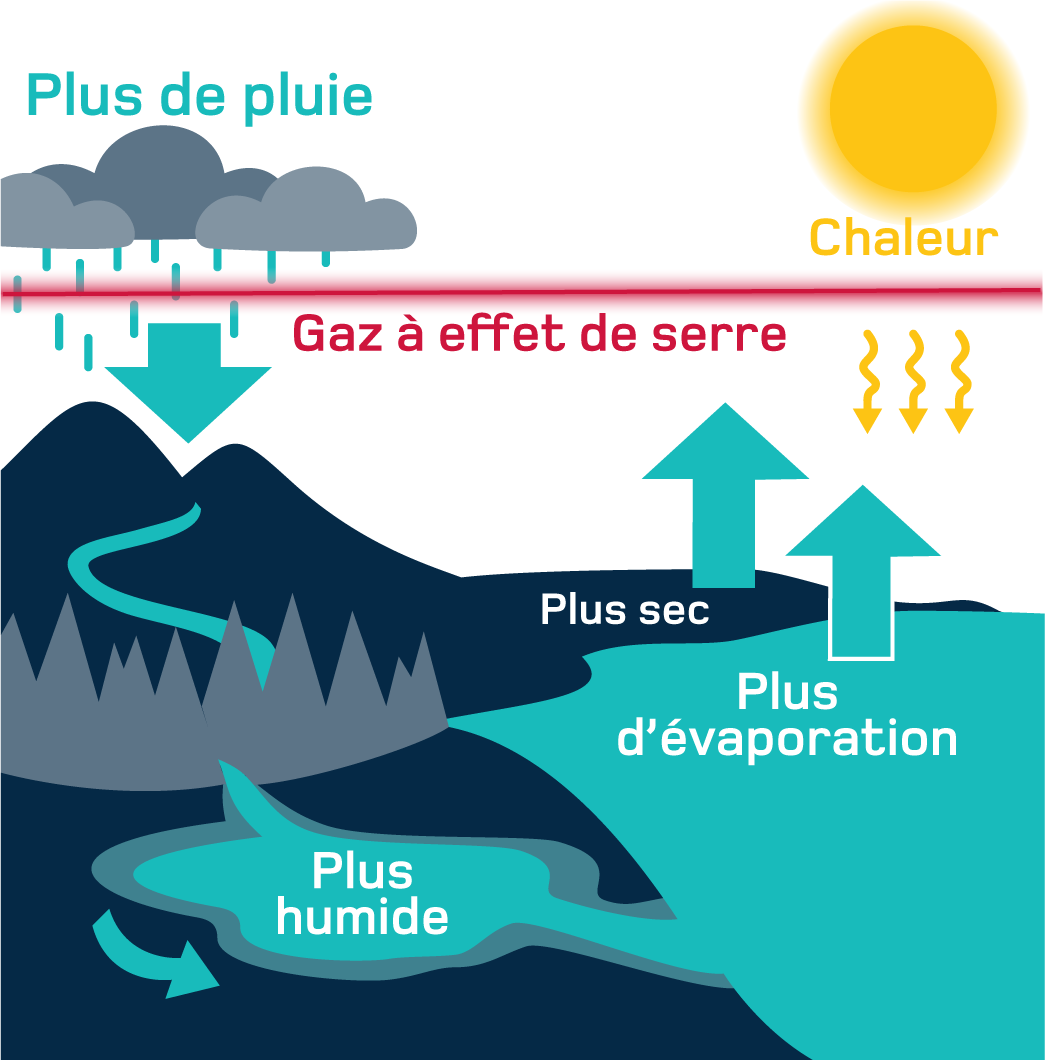High water and flooding
The years 2017 and 2019 were marked by major flooding due to the magnitude of the springtime rise in the water levels of several rivers in Quebec. These caused many material, social, health and economic impacts and highlighted our vulnerabilities in the face of this hazard.
A flood is defined as an overflow of water that submerges land that is usually dry for most of the year. It is a natural phenomenon occurring at different frequencies and is not necessarily negative. It becomes a risk when important elements like buildings and roads are exposed to it and are damaged.
Definition | High water event
A high water event occurs when the water level of a river rises well above normal levels. Spring freshets occur when snow and ice melt in the spring, while flash floods can occur in the summer due to heavy rain.
A high water event can be a factor contributing to flooding in an area, although it is not always the cause.
Different types of flooding in Quebec
Open-water flooding
Coastal flooding
Ice jams
Sewage backups
Open-water flooding occurs when the amount of water to be drained exceeds the normal capacity of lakes and rivers to contain water, causing them to overflow. It can occur during spring freshets generated by snowmelt and spring rains, as well as during summer and fall due to heavy precipitation events.
Coastal flooding or submersion results from the intersection of several factors, including wind speed and direction, ice cover on the water, atmospheric pressure, tides and sea level. Coastal flooding can occur suddenly, as a result of a wave during a maritime storm, or gradually due to rising sea levels. Coastal submersion also exacerbates coastal erosion. The influence of climate change on this hazard is discussed on the page on coastal erosion and submersion.
Ice jams result from the accumulation of floating ice in a narrower stream. The retained ice creates a kind of temporary dam, causing the water to overflow upstream.
Sewage backups result from an overflow of wastewater conduits in urban areas. These often occur as a result of intense precipitation events. They can cause major flooding.
Although several types of flooding can occur in Quebec, open-water flooding is the most frequent. For that reason, this page will focus more specifically on this type of flooding, in connection with climate change.
Over the years, the average annual temperature has increased by 1 to 3°C in Quebec, and this trend is expected to continue. When the temperature rises, it disrupts the water cycle. Warmer air can hold more water, which has consequences on things like evaporation, precipitation and the melting of snow and ice. That means several climatic factors can affect the occurrence and frequency of high water events and flooding.
In the wake of the events in spring 2017, the government of Quebec initiated a broad-based reflection on the management of flood risks across the province in the context of climate change. This reflection gave rise to several major observations, including the need for up-to-date and complete mapping of flood-prone areas in Quebec, allowing for sufficient evaluation of this risk in land use planning and in the implementation of adaptation solutions. In response, the INFO-Crue project was established.
